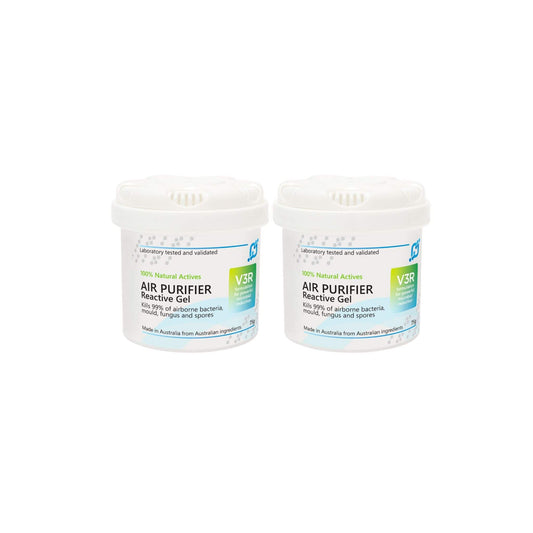
The Hidden Dangers of Mould and Bacteria in Your Air Conditioner: Health Risks and How to Protect Your Home
Share
In today’s modern world, air conditioning has become an essential part of our daily lives, especially in areas with extreme weather conditions. However, while enjoying the cool breeze of an air-conditioned space, we often overlook a hidden threat lurking within our units—mould and bacteria. These microorganisms can silently proliferate inside your units, posing serious health risks to you and your family. This blog post will delve into the dangers of mould and bacteria in air conditioners, their impact on health, and effective remediation techniques to ensure your home remains a safe haven.
Understanding the Problem: How Mould and Bacteria Thrive in Air Conditioners
Air conditioners are designed to regulate temperature and humidity, creating an environment that can also be conducive to the growth of mould and bacteria. When the unit operates, it generates moisture, which can accumulate in various parts, particularly in the cooling coils and drain pans. If not regularly cleaned and maintained, this moisture, combined with dust and debris, provides the perfect breeding ground for harmful microorganisms.
Mould spores are naturally present in the air, but they only become problematic when they find a damp environment to colonise. Similarly, bacteria can thrive in moist and warm conditions, leading to potential contamination of the air circulated by your air conditioner.
The Health Risks Associated with Mould and Bacteria in Air Conditioners
The presence of mould and bacteria in your air conditioner can lead to several health issues, particularly for those with pre-existing respiratory conditions, allergies, or weakened immune systems. Some of the common health risks include:
-
Respiratory Problems: Inhaling mould spores or bacteria-laden air can cause or exacerbate respiratory conditions such as asthma, bronchitis, and other chronic respiratory diseases.
-
Allergic Reactions: Exposure to mould and bacteria can trigger allergic reactions, resulting in symptoms like sneezing, coughing, skin rashes, and itchy eyes.
-
Infections: Certain types of bacteria, such as Legionella, which causes Legionnaires' disease, can thrive in air conditioning systems. This can lead to severe infections, especially in vulnerable individuals.
-
Toxic Effects: Some moulds produce mycotoxins, toxic substances that can lead to neurological symptoms and other severe health issues when inhaled over prolonged periods.
-
General Discomfort: Poor indoor air quality caused by mould and bacteria can lead to general discomfort, including headaches, fatigue, and difficulty concentrating.
Signs Your Air Conditioner Might Be Contaminated
It’s essential to recognise the signs that your air conditioner might be harbouring mould or bacteria. Early detection can help prevent severe health issues and costly repairs. Here are some common indicators:
-
Musty Odour: A persistent musty smell when the air conditioner is running is a strong sign of mould growth inside the unit.
-
Visible Mould: In some cases, you might be able to see mould growing on the vents or other parts of the air conditioner.
-
Increased Allergy Symptoms: If you or your family members experience worsening allergy symptoms when the air conditioner is in use, it could be due to mould or bacteria in the unit.
-
Unexplained Illness: Frequent or unexplained respiratory issues or other health problems may indicate poor air quality caused by a contaminated air conditioner.
Effective Remediation and Prevention Strategies
The good news is that mould and bacteria in your air conditioner can be effectively remediated and prevented with regular maintenance and cleaning. Here are some steps you can take:
-
Regular Cleaning: Schedule regular cleaning of your air conditioner, including the cooling coils, filters, and drain pans. A professional cleaning service can ensure that all parts of the unit are thoroughly sanitised.
-
Use a High-Efficiency Particulate Air (HEPA) Filter: Upgrading to a HEPA filter can help trap mould spores and bacteria, preventing them from circulating in your home.
-
Control Humidity Levels: Maintain optimal indoor humidity levels (ideally between 30% and 50%) to reduce the likelihood of mould growth. Dehumidifiers can be used in particularly humid environments.
-
Regular Inspections: Have your air conditioning system inspected by professionals at least once a year. They can identify potential problems before they escalate.
-
Prompt Repairs: Address any leaks or drainage issues in your air conditioner promptly to prevent moisture buildup.
-
Consider UV Light Installation: UV light systems can be installed within the air conditioner to kill mould spores and bacteria as they pass through the unit.
Prioritise Your Health and Safety
Your air conditioner plays a vital role in maintaining a comfortable living environment, but it also has the potential to impact your health if not properly maintained. Mould and bacteria can silently contaminate the air you breathe, leading to various health issues, some of which can be severe. By being proactive with regular cleaning, inspections, and the use of advanced filtration systems, you can ensure that your air conditioner not only keeps you cool but also promotes a healthy living space.
Remember, a clean air conditioner is not just about comfort—it’s about safeguarding the health of everyone in your home. Make sure to prioritise regular maintenance and be vigilant about the signs of contamination. Your health and well-being depend on it.
Want to clean your aircon? Use the following link to purchase our Home DIY Kit to ensure your home stays mould and bacteria-free click here to shop now! Use the code MOULD for 10% OFF




